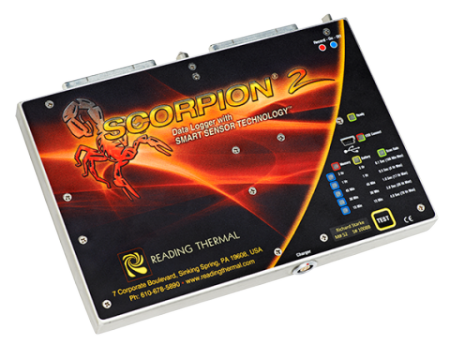While temperature often gets most of the attention, humidity is just as important – and sometimes even more unpredictable. Fluctuating humidity levels inside the oven can cause baked goods to come out too dry, too soft, unevenly baked, or even unsafe. Temperature and humidity monitoring for commercial bakery ovens in Laguna, Philippines from Reading Thermal is essential for maintaining product quality and improving operational efficiency.
At Reading Thermal, we help bakeries get to the bottom of these issues with tools like the SCORPION® 2 Humidity Sensor, which offers accurate, real-time data on moisture conditions in your oven. With this information, you can address the root causes of inconsistent baking and take control of your process.
The Science Behind Humidity and Baking
Humidity refers to the amount of water vapor in the air, and it affects everything from how heat transfers in the oven to how moisture is retained in your dough. When the oven’s humidity fluctuates – rising and falling during the bake – it can cause instability in the baking environment. That instability can lead to products drying out too fast or not drying out enough. The result? Inconsistent textures, underdeveloped crusts, or irregular color.
When relative humidity is high, water evaporates more slowly from the surface of the product. That can be helpful in the early stages of baking – like when you need steam to help bread expand and develop a glossy crust. But if high humidity levels persist too long, they can prevent proper crust development or cause products to feel gummy and soft even when fully baked.
On the other hand, low humidity conditions speed up water evaporation. If the air inside the oven is too dry, products may lose moisture too quickly, leading to cracking, over-drying, or poor volume. For delicate items like cookies or pastries, this can mean a drastic change in texture or appearance. These effects are magnified when humidity isn’t consistent throughout the oven or across different baking shifts.
How Fluctuations Create Inconsistencies
One of the biggest challenges with humidity is that it doesn’t always stay constant. Factors such as oven load, ambient bakery conditions, airflow, and product moisture all influence the oven’s internal humidity. Without proper monitoring, these shifts can go unnoticed—until they start affecting your product.
Imagine you’re running the same product through the same oven settings, but on different days, you get different results. One day the cookies are soft and chewy, the next they’re dry and crumbly. This inconsistency is often a sign that humidity is fluctuating more than you realize.
This is why real-time monitoring is so valuable. Reading Thermal’s SCORPION® 2 Humidity Sensor records moisture levels zone by zone. It helps you see how humidity changes throughout the bake and whether those changes are within acceptable ranges. With this data, you can pinpoint problem areas and adjust oven settings, airflow, or even recipe formulations to achieve more stable results.
The Long-Term Benefits of Humidity Control
Controlling humidity isn’t just about getting today’s batch right – it’s about building a repeatable process that reduces waste, improves shelf life and increases product consistency. When your humidity levels are stable, you can count on consistent texture, uniform color, and reliable performance. That’s not just good for product quality – it’s great for customer satisfaction and your bottom line.
Plus, in terms of food safety, managing humidity is essential for validating kill-step processes. The right combination of heat and moisture ensures that harmful pathogens are eliminated, protecting your customers and helping your operation meet regulatory requirements.
See how Reading Thermal technology promotes temperature and humidity monitoring for commercial bakery ovens in Laguna, Philippines by contacting us online or calling (01) 610-678-5890.

